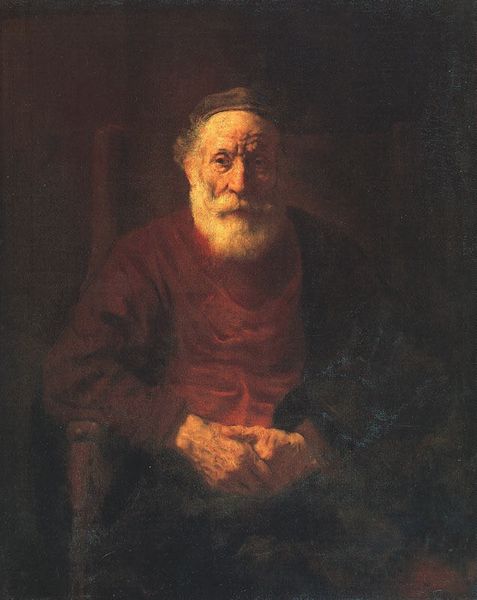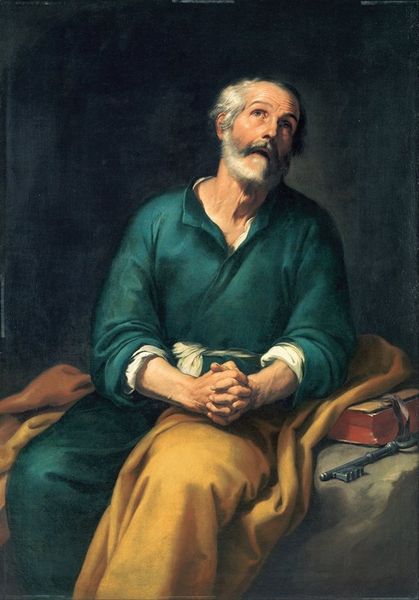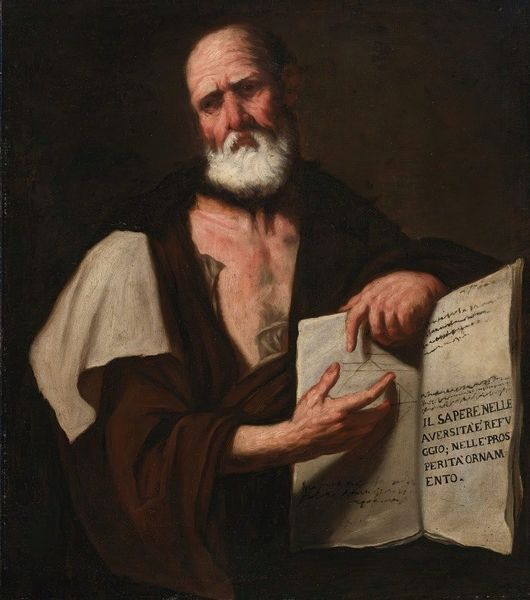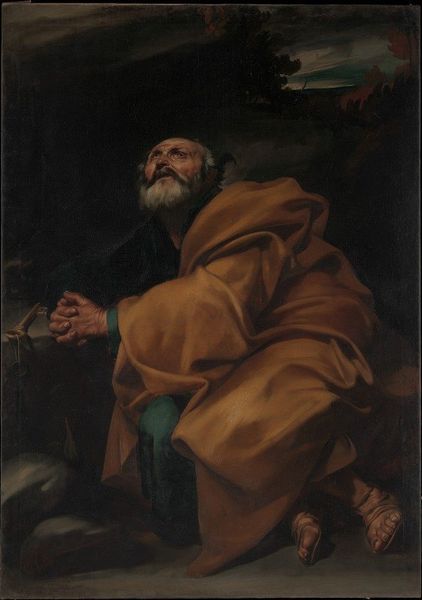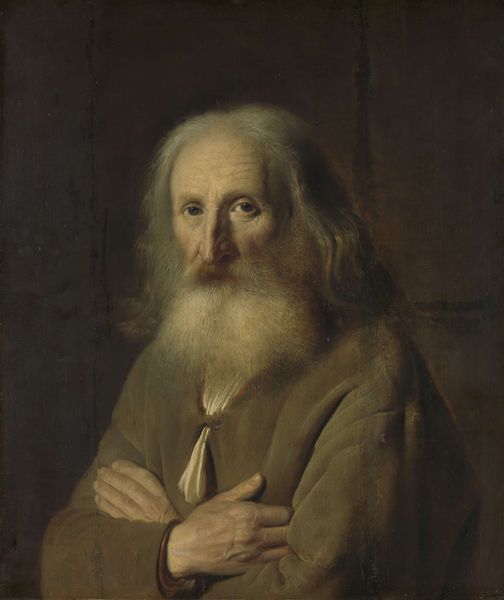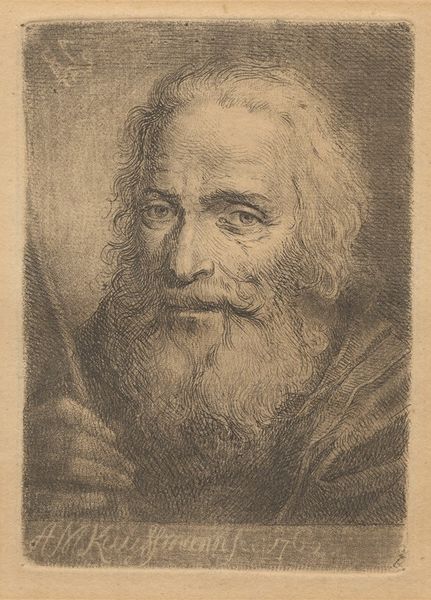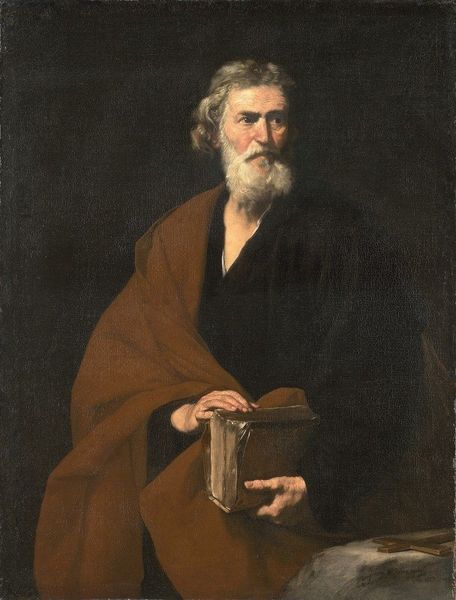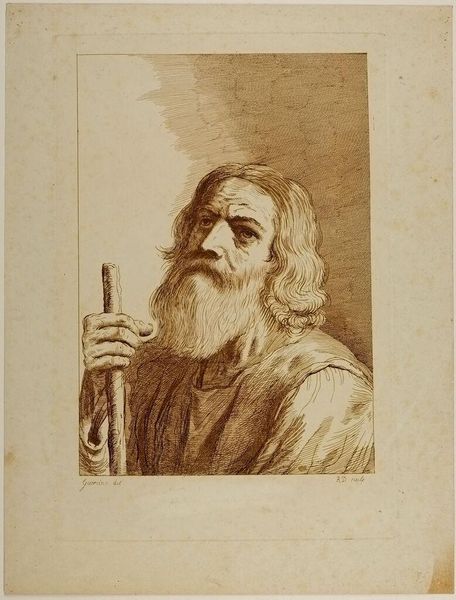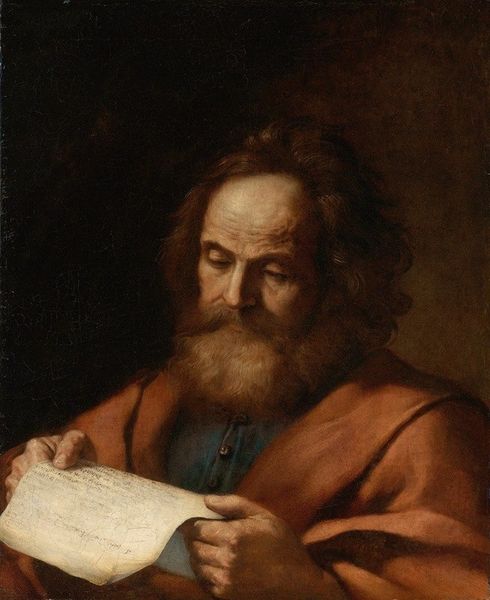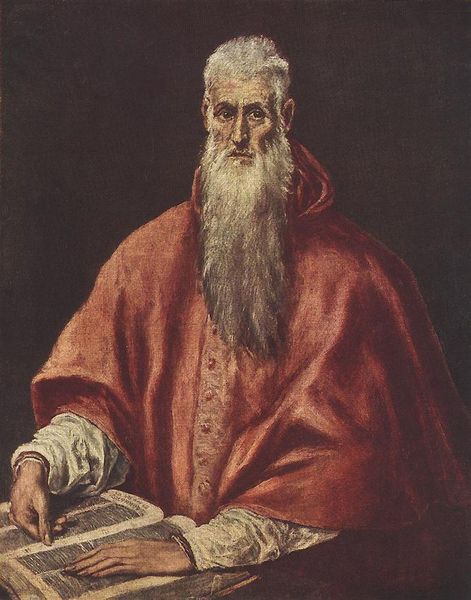
painting, oil-paint
#
portrait
#
painting
#
oil-paint
#
oil painting
#
genre-painting
#
history-painting
#
portrait art
#
realism
Copyright: Public Domain: Artvee
Editor: This oil painting, "Isaiah" by Ernest Meissonier, made around 1838, presents the prophet in what appears to be a grotto, illuminated by a light source we cannot see. There is a compelling realism and mood of introspection... What is your interpretation of this work? Curator: What strikes me first is the tension between the elevated subject and the decidedly grounded, even earthy, depiction. Look at the materials used. Meissonier's process employs rough brushstrokes, especially noticeable in the depiction of the rock and the prophet’s bare foot. Doesn't this challenge the tradition of idealizing religious figures through high art? Editor: I see what you mean, there's almost a discomforting realness. Is that a critique of religious art from that time, focusing more on the labor than spiritual symbolism? Curator: Precisely. The red robe, a significant use of pigment considering its cost, clashes with the modest green tunic. Could this contrast point to the church's material wealth juxtaposed with Isaiah’s humble lifestyle? What do you make of that juxtaposition of red and green, and where these shades of pigment may have originated? Editor: I hadn't thought of the socio-economic implications of color. It makes you think about trade routes and the exploitation involved in acquiring these materials. It also makes the prophet almost relatable, less divine and more like someone trying to navigate the church's economic disparity. Curator: Exactly. The work prompts a broader questioning of power structures, labor involved in art making, and the consumption of art itself. It’s a history lesson embedded in brushstrokes and pigments. Editor: I learned to consider the materials beyond aesthetics. Viewing it through a materialist lens opens the work to so much deeper reflection on society and history. Curator: Indeed, considering artistic creation as another form of production transforms the way we perceive its historical context.
Comments
No comments
Be the first to comment and join the conversation on the ultimate creative platform.
